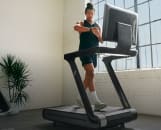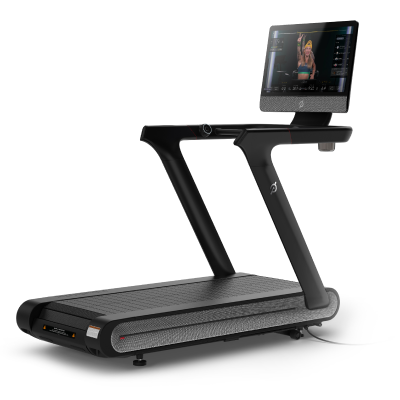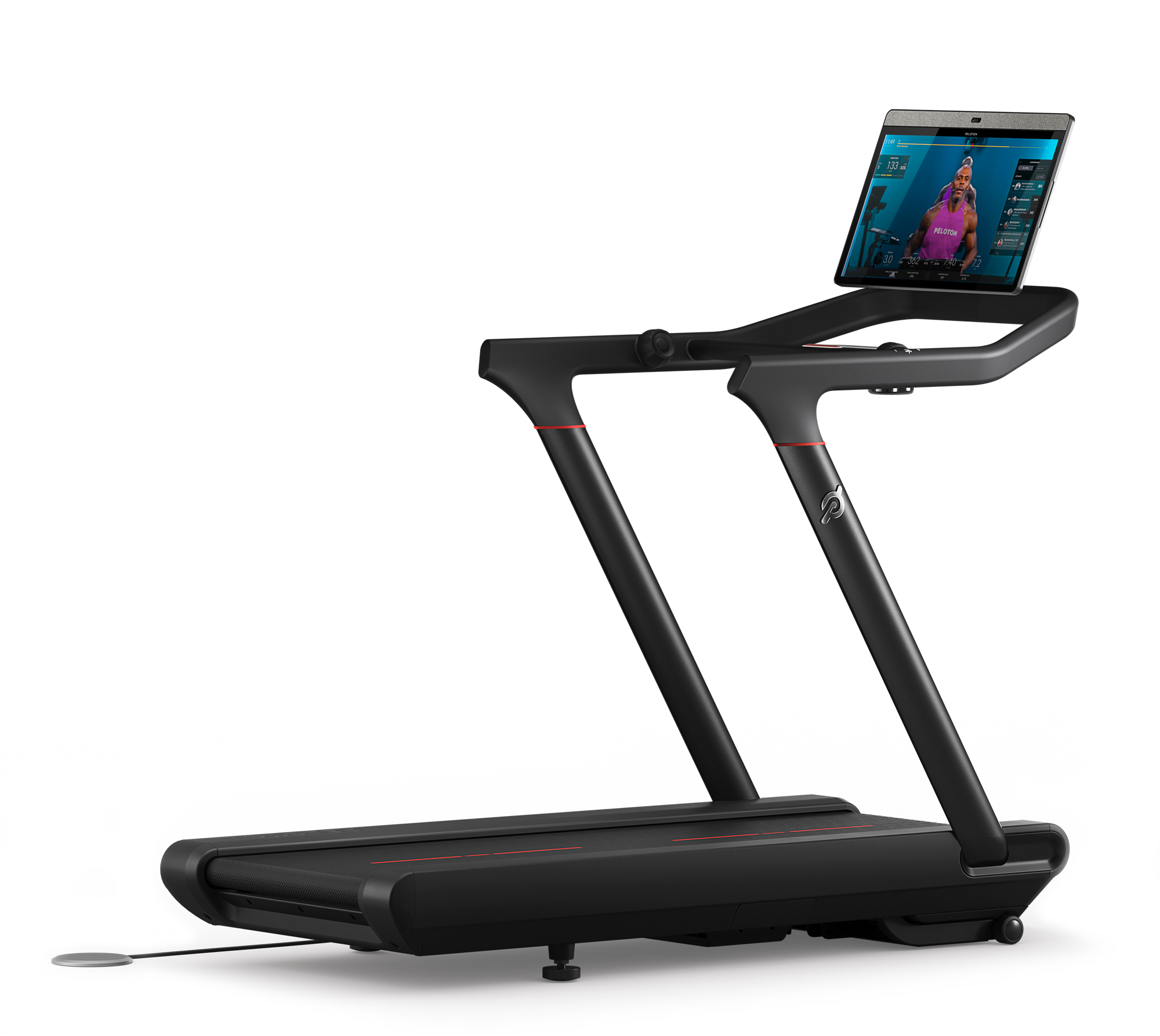
Here’s How to Pick the Best Tread Incline for Your Next Run
Plus, learn about the benefits you get from adding incline to your runs.
By Jennifer Heimlich•
How Treadmill Incline Affects Your Run
The Benefits of Running On an Incline
How to Pick the Best Tread Incline for Your Next Run
Incline Runs on Peloton Tread and Tread+
Let’s be honest: When hopping on a treadmill, it’s tempting to keep the incline pancake flat. You’re already sweating and panting hard enough, right? Well, the truth is that you can gain a ton out of raising up that deck. “Adding incline into your runs is so necessary to become the well-rounded athletes we all strive to be!” says Peloton instructor Olivia Amato. But there’s a big difference between adding one percent incline and 12 percent. You might wonder, What incline should I run on a treadmill? Here’s what to keep in mind when deciding exactly how high to crank it up.
How Treadmill Incline Affects Your Run
Anyone who’s ever boosted the incline of a treadmill knows one simple truth: Higher is harder. But what’s exactly going on in your body when you change the grade?
Well, muscles throughout the back of your lower body—known as the posterior chain—put in overtime to power you up that hill. “Higher incline fires up the glutes, hamstrings, and calves more,” Olivia says. She adds that your core and lower back also activate to stabilize your body.
The extra challenge also means your cardiovascular system has to step things up: “The heart works harder to supply oxygen to the muscles,” Olivia says. And, unsurprisingly, all this extra work uses up more energy.
The impact going through your joints with each step is also a little different when you’re on an incline. Chris Heydrick, a physical therapist with MedStar Health in Baltimore, says there’s evidence that forces through the knee actually decrease, but the stress through the Achilles tendon and calf muscles increase since your foot lands at an angle.
Explore Peloton Treads
The Benefits of Running On an Incline
There are good reasons why so many Peloton Tread classes have you boost that incline. For starters, hill workouts are simply more efficient: “It can be done for a shorter amount of time than flat running and still reap the same benefits,” Olivia says. You also get some perks that are unique to incline running.
Builds Strength and Protects Against Injury
Olivia points out that running on an incline strengthens the calves, hamstrings, and glutes. This not only pays off with faster running—even when you’re on flat ground—but it can also help protect your body against injury. If we use these muscles more when running, Heydrick says it can take some stress off of the quads and decrease the likelihood of injuries in the front of the knees (one of the most common problems for runners).
Boosts Cardio Fitness
The extra challenge of running up an incline gets your heart beating harder. This can increase your heart and lung efficiency, and improve your VO2 max, or how much oxygen your body can use during exercise, Olivia points out. “[It’s] a good way to get a good workout in if you are under a time crunch,” she says.
Creates Less Impact
For those with knee issues, running on an incline can be helpful because you aren’t putting as much force through that joint when you land. “You just don't see the same level of vertical oscillation—how high in the air you go—because the floor has now met you,” Heydrick says. He also points out that we typically run slower on an incline because, well, it’s harder, and that can decrease ground impact forces as well.
Challenges You Mentally
Running on an incline isn’t easy—which is the point. “[It] helps build mental toughness,” Olivia says. If you’re training for a race, this prepares you to conquer any hills you’ll encounter on the course. But also think of it this way: The treadmill would be a pretty boring machine if you never changed up the incline. Adding a bit of elevation will not only give you a more challenging run, but a more engaging one, too.
How to Pick the Best Tread Incline for Your Next Run
So what incline should you run on a treadmill? “It’s important to align the incline with your goals and fitness level,” Olivia says. For her own runs, she considers what type of workout she’s doing and what she wants to get out of it, while also making sure she doesn’t stress her body in the exact same way day after day. Here are some guidelines for choosing your own incline.
If You Want To Build Strength: Aim High
When you’re looking to challenge your muscular endurance, and build that strength in your glutes, hamstrings, calves, and core, Olivia recommends bringing up that incline as high as you can comfortably manage. Aim for somewhere between eight and 12 percent, and keep challenging yourself to go higher as you get stronger.
Just give yourself time to work up to those more intense grades. “Take a gradual approach,” Heydrick says. He suggests doing two workouts at a given incline and making sure your body can handle it before going up a percentage or two.
If You’re Rehabbing an Injury: It Depends
When you’re injured, you’ll want to check with a physical therapist about the safest incline setting for your particular issue. Those with pain in the front of their knees might actually find a small amount of incline helps them run more comfortably. “I'll have runners that have maybe 3 out of 10 pain on flats, and they can get on the inclined treadmill and not have any pain,” Heydrick says.
However, incline can exacerbate problems like Achilles tendinitis, plantar fasciitis, or calf strain, Heydrick says. In that case, you’ll want to work on calf strengthening before trying to do any faster sessions on the incline.
If You’re Training for a Long Road Race: Keep It Moderate
When you’re prepping for a marathon, there’s no need to max out the incline on your Tread, Olivia says. A smarter strategy is to adjust the incline throughout your run to mimic the hills you’ll encounter on the course. You might keep the incline at one to two percent for the majority of the run, then mix in a few “hill repeats” by bringing it up to six to eight percent incline for a few intervals.
If You’re Gearing Up for a Trail Race: Max It Out
Most trail races take place in mountains with major elevation changes, and running on a steep incline on the treadmill is a great way to train for those climbs. Heydrick, a trail runner himself, recommends cranking up the deck as high as it goes for at least part of your run. For instance, on the Peloton Tread you can get up to 12.5 percent, and on the Tread+ you can reach 15 percent.
Does 1 Percent Incline Actually Mimic Outdoor Running?
One of those common maxims that float around the gym is that you should always run on a one-percent incline on a treadmill. The idea is that because you’re not encountering any air resistance—since your body stays in the same place with the belt moving beneath you—adding a touch of incline better simulates the challenge of running outside.
But is there truth to this? “It’s a good guideline,” Olivia says. “But it’s not always accurate.” She points out that when you’re running outdoors, wind and terrain can make holding your pace even more challenging, and one percent might not be enough. She also doesn’t recommend the one-percent rule for speed workouts—it’s best reserved for steady-state runs, she says.
Heydrick suggests following what feels best for you. “Some runners feel like they're almost going downhill at zero percent incline,” he says. If you fall in that bucket, test out what it feels like to run with the incline anywhere from half a percent to two percent—somewhere in there might be your happy place.
Incline Runs on Peloton Tread and Tread+
The Peloton Tread and Tread+ have a few special features that can help you get in a great incline run. For starters, Peloton has both live and on-demand Hill running classes for all levels of runners where an instructor will guide you through a warm-up and the exact incline grades you should hit so there’s no second-guessing. During On-Demand Tread classes, you can even set the Tread to automatically adjust based on the instructor’s cues so that all you have to do is run.
Olivia says she also loves how you adjust the incline on Peloton Treads: There’s a knob on the side of the handlebars that you can roll forward or back with a quick swipe to change the angle of the deck. Or you can press a button to quickly jump to the next incline grade. “It allows for a seamless transition when running at different inclines,” she says. “[It’s] also really good for hill simulations.”
Taking advantage of these tools will turn you into a stronger, more powerful runner who’s ready to take on any course—no matter the elevation.
This content is for informational and educational purposes only and does not constitute individualized advice. It is not intended to replace professional medical evaluation, diagnosis, or treatment. Seek the advice of your physician for questions you may have regarding your health or a medical condition. If you are having a medical emergency, call your physician or 911 immediately.
Explore Peloton Treads
Level up your inbox.
Subscribe for a weekly dose of fitness, plus the latest promos, launches, and events.
By providing your email address, you agree to receive marketing communications from Peloton.
For more about how we use your information, see our Privacy Policy.








